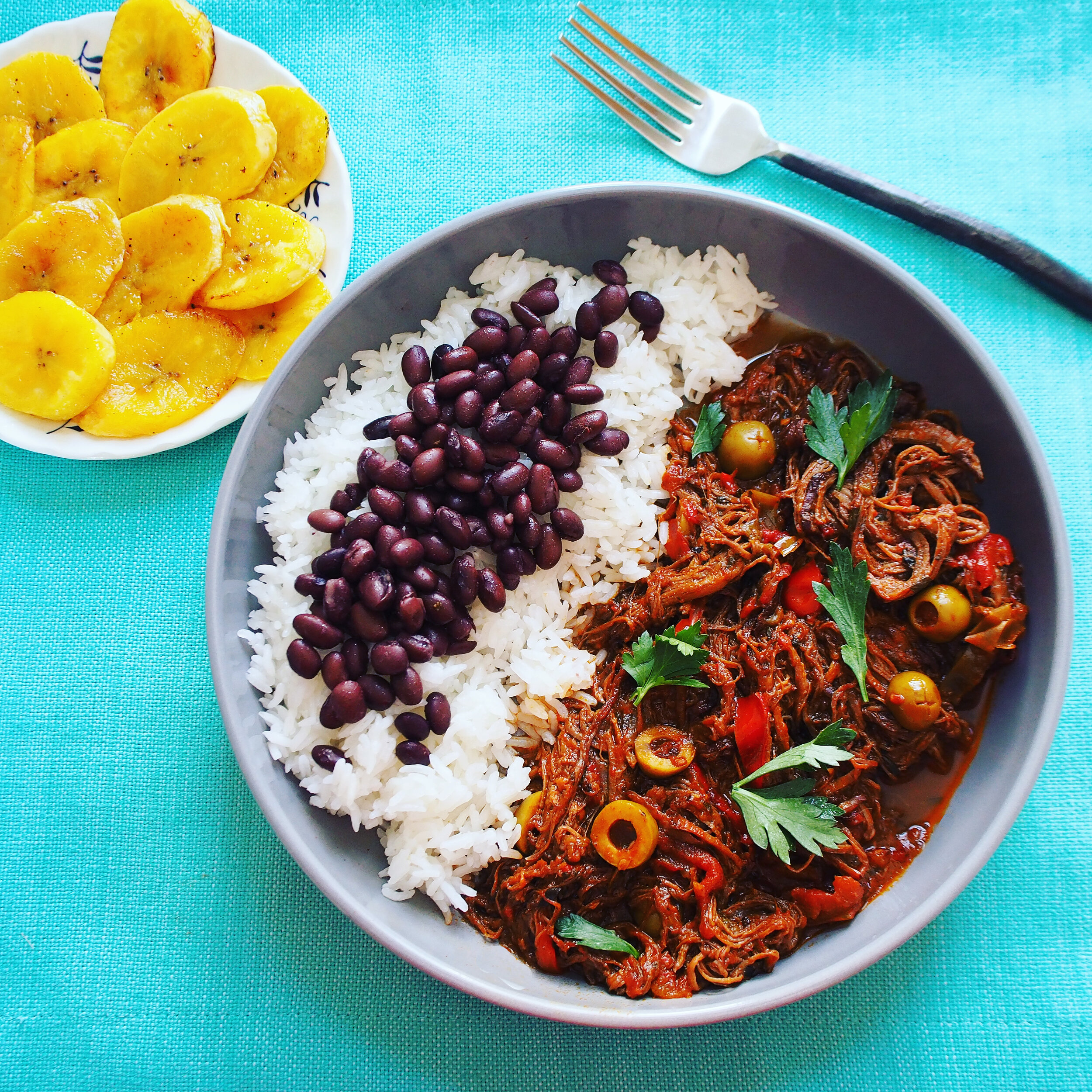Ropa Vieja
/Ropa Vieja is one of Cuba’s national dishes and is hands-down a seriously delicious stew that’s big on taste with tomatoes, bell peppers, and spices. My go-to protein for this recipe is Australian grassfed flank steak because it’s high-quality and a simple, healthy swap that trims the fat without sacrificing flavor! When you’re craving a savory stew in summer, this is the dish that will hit every taste bud and will come together perfectly as you cook (and dance!) with a little Cuban music in the background.
Ropa Vieja translates to “old clothes” in Spanish because after hours of cooking, the flank steak resembles clothing that’s been worn for a long time. My friend, and future cousin-in-law, inspired me to cook this dish for the first time a few years ago and I’ve been cooking it ever since. It’s a recipe that her Cuban grandmother and aunt would make for her growing up when she visited Miami in the summer. Her aunt likes to call the dish Ropa de Vieja, which is a naming I can definitely get behind because it naturally rolls of the tongue.
My personal preference is to cook Ropa Vieja in the pressure cooker because it saves a lot of time and means I can make it on a weeknight! If you don’t have a pressure cooker, save this for the weekend and stew the steak for a few hours until it's beyond tender.
For more on where to buy Australian grassfed flank steak for your next Ropa Vieja cooking adventure, visit the Where to Buy page. You’ll be sure to cook this dish for many summers to come!
Ropa Vieja with Australian Grassfed Flank Steak
Time: 45 Minutes
Serves: 6-8
Ingredients
1 ½ lbs Australian grassfed flank steak
1 ½ tsp kosher salt
½ tsp freshly ground black pepper
2 tbsp canola oil, divided
1 large yellow onion, thinly sliced
6 cloves garlic, finely chopped
1 green bell pepper, thinly sliced
1 red bell pepper, thinly sliced
2 tsp dried oregano
2 tsp dried thyme
2 tsp ground cumin
2 tsp smoked paprika
1 cup dry red wine
1 (15 oz) can whole tomatoes
3 tbsp tomato paste
1 cup beef broth
1 bay leaf
1 tbsp white vinegar
½ cup pimiento-stuffed Spanish olives, halved
To Serve
Steamed rice
Fried plantains
Canned black beans
Fresh parsley, roughly chopped
Directions
Season Australian grassfed flank steak with kosher salt and freshly ground pepper. Heat 1 tbsp canola oil in a 6-quart pressure cooker over medium-high heat. Add steak and brown on each side, about 2-3 minutes. Transfer to a plate.
Add an additional 1 tbsp oil in the pressure cooker over medium high heat and stir in onions, garlic, and bell peppers. Sauté until the onions have softened, about 4 minutes. Stir in oregano, thyme, cumin, and paprika and sauté until fragrant, about 30 seconds. Add wine and simmer until most of the liquid has evaporated, about 2 minutes.
Add tomatoes, tomato paste, beef broth, and bay leaf to the pressure cooker. Simmer for 2 minutes, breaking up tomatoes with a spoon. Return steak and accumulated juices to the cooker. Cover and secure pressure cooker with lid and increase heat to high. Once the pressure cooker whistles over high pressure, reduce the pressure to low and cook for 25 minutes. Remove from heat and allow to cool before removing lid.
Reheat the stew uncovered over medium heat. Season with salt and pepper to taste. Stir in vinegar and olives and simmer for 5 minutes to allow flavors to combine.
Serve stew over rice with fried plantains and black beans on the side. Garnish with parsley. Enjoy!
If you liked this recipe, you will love my recipes for Peruvian-Style Steak with Aji Amarillo Mashed Potatoes, Flank Steak with Roasted Vegetables in a Red Wine Reduction Sauce, and Thai-Style Aussie Grassfed Beef Strip Steak with Slow-Cooked Green Beans & Tomato Chutney!











